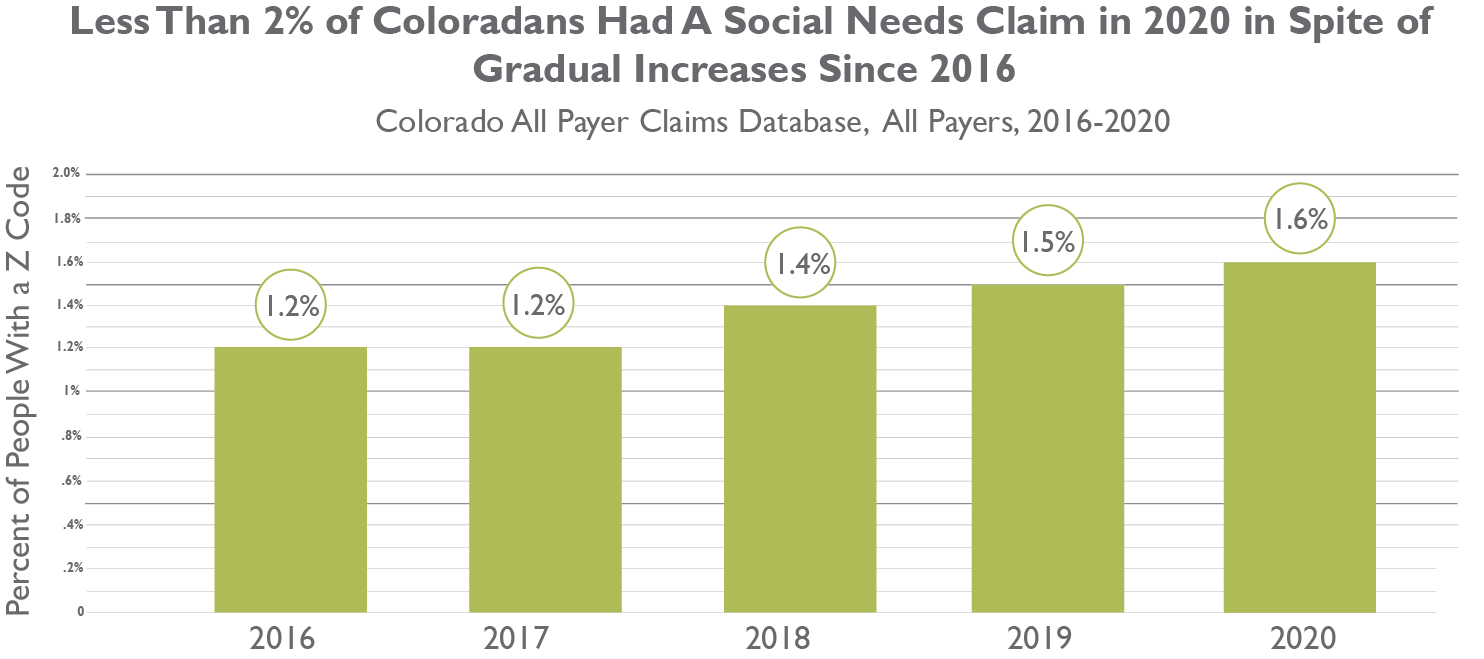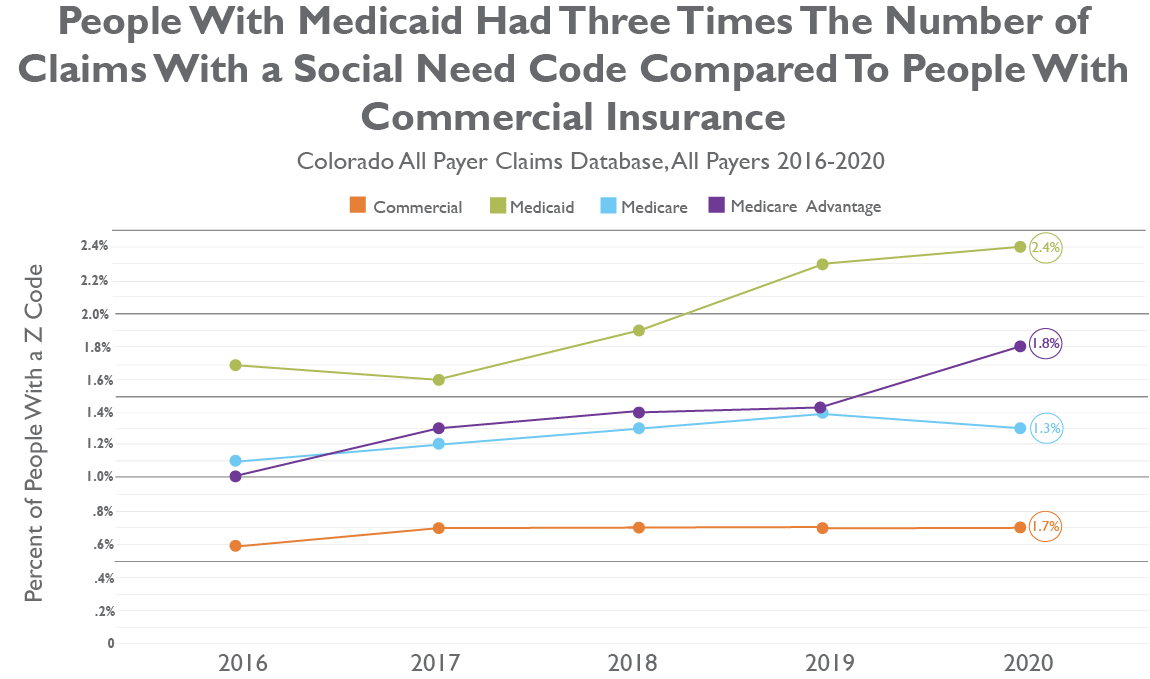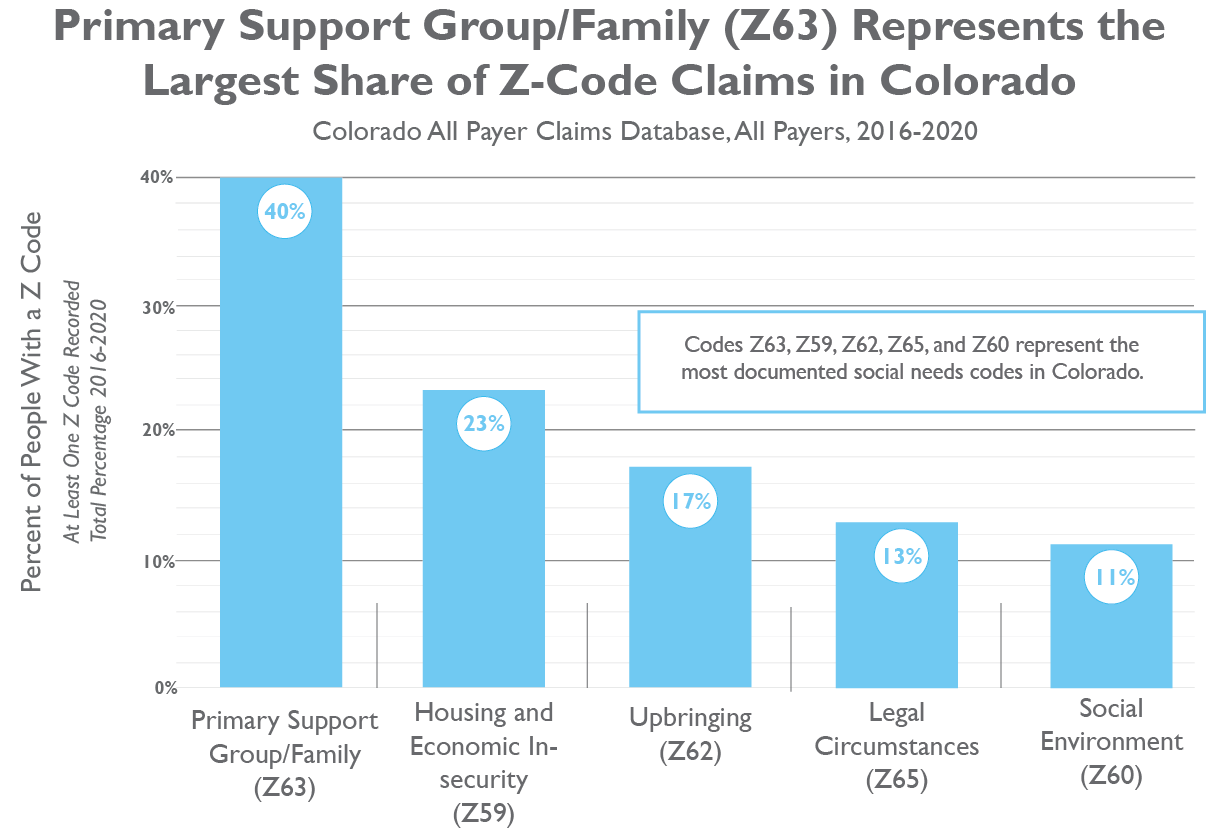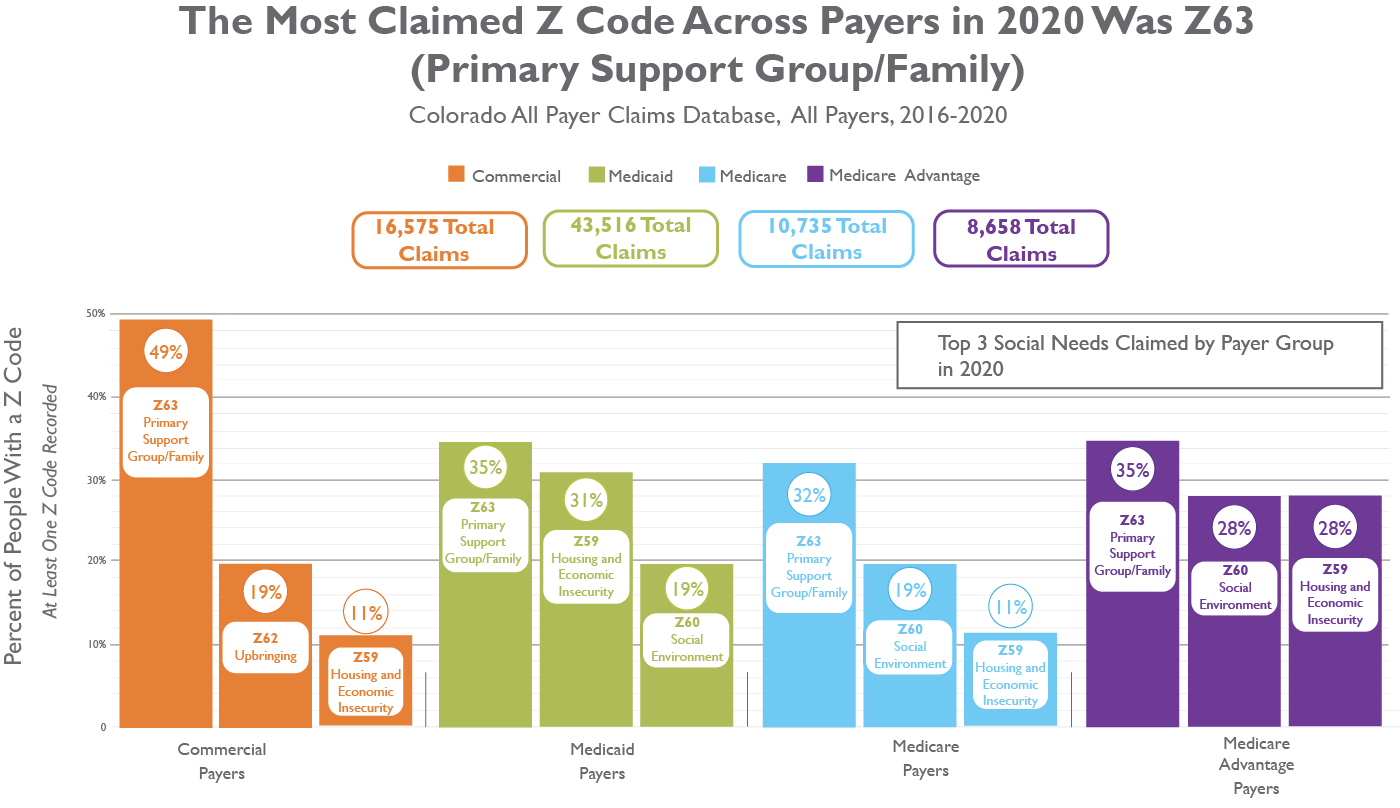Social factors such as race, education, income, housing and transportation can have a major impact on a person’s ability to live a healthy life. These social determinants of health play a powerful, fundamental role in health outcomes and health equity for individuals and entire communities. In fact, studies have found that up to 80% of a person’s health is related to social factors that are often out of their control and systemic in nature. In an effort to better understand social needs and the impact on patient health, “Z Codes” were introduced as part of the ICD-10 codes released in late 2015. Using these codes, providers and others in the health care system can improve patient care, recognize opportunities to make referrals and better coordinate care, and identify patient and community health equity needs.

Based on the American Hospital Association’s Societal Factors That Influence Health Framework
What Are Z Codes?
If a person is experiencing a social need, their provider can choose to indicate their particular need(s) by documenting one of several Z codes on their health insurance claim.
Z codes are divided into the following major categories of non-medical conditions that may influence a person’s health:

Availability of Z codes is relatively new, and as with any new code that isn’t directly tied to reimbursement, adoption and use of the codes among providers has been slow. A data report published in 2021 by the Centers for Medicare & Medicaid Services (CMS) identified that, among over 33 million individuals enrolled in Medicare Fee For Service (FFS), just under 2% had claims that contained Z codes. CMS identified several ongoing challenges in Z code collection, including provider lack of awareness that the codes exist, unfamiliarity and discomfort with the process, and lack of knowledge on how to appropriately use the codes.
Z Codes in the CO APCD
In Colorado, the percent of people with claims that indicate a social need is similar to the national data. Since 2016, the first full year the codes were available, use of the codes has increased, but still only 1.6% of Coloradans in the CO APCD in 2020 across all payers had a claim with a Z code. It is important to note that a person may have more than one health-related social need identified, depending on their situation.

Breakdowns by payer show people with commercial insurance have consistently fewer Z codes, which could be due to less social need for commercially covered Coloradans compared to those covered by public plans, in addition to the lack of financial incentive for providers to document social needs for commercially covered patients.

People covered by Medicaid are likely to be impacted the most by social determinants of health, and data in the CO APCD does indicate that use of Z codes for the Medicaid population is higher than any other payer type and has increased the most since 2016. This also could be driven by Medicaid Regional Accountable Entities (RAEs), some of which use Z codes to determine patient complexity which factors into determining payments to providers. In 2020, people with Medicare Advantage had the second highest percentages of Z codes indicated on their claims followed by Medicare Fee-for-Service (FFS) and commercial coverage.
Most Frequent Social Needs Codes in Colorado
In the CO APCD, the five most common social needs indicated by Z codes from 2016-2020 were:
- Primary Support Group/Family (Z63)
- Housing and Economic Insecurity (Z59)
- Upbringing (Z62)
- Legal Circumstances (Z65)
- Social Environment (Z60)

Z code documentation across all payers in 2020 shows that the top three needs documented fell under the categories of Primary Support Group/Family (35%), Housing and Economic Insecurity (25%), and Upbringing (17%). Primary Support Group/Family was the highest reported code group across all payer types with the exception of Medicaid. For the Medicaid population, housing and economic insecurity was the most frequent code grouping used. It is important to note that a person may have more than one health-related social need identified, depending on their situation.

Next Steps
While Z codes are being utilized by health care providers more frequently now than in 2016, more comprehensive use of Z codes is needed to fully determine the impact of social needs on health and health equity. According to the Colorado Department of Public Health and the Environment’s (CDPHE) Community Health Equity Map with data from 2015-2019, there are communities in our state where as much as 25% of the population has no high school diploma (Z55), 32% of the population is experiencing unemployment (Z56), and 20-90% of people are living in poverty (Z59), which is comparatively under-represented in Z code documentation in the CO APCD.
Without proper provider education and training, in combination with financial incentives, it’s unlikely use of Z codes will become more prevalent for already busy and administratively burdened providers. However, increased use of these codes has the potential to illuminate opportunities to address socially driven health inequities and should be considered by payers, providers and policy makers as a priority in data collection and documentation.[1]
In the meantime, CIVHC is working on combining CO APCD data with external sources of information such as the American Community Survey and Social Vulnerability Index to highlight social needs and the impact on health and health care. CIVHC has geocoded the CO APCD to enable census tract-level reporting and will soon be releasing an interactive report that shows the impact of race/ethnicity, housing, transportation, income and education levels on measures in the Community Dashboard such as Emergency Department visits.
Although Z codes are still new and underutilized, looking at social needs claims can provide insight into the most prescient needs across communities and offer a general idea of prevalent social conditions in our state that providers, hospitals, legislators and others can use to identify opportunities for systemic improvement.
Regardless of how the data is captured, it is essential that everyone in the health care space continue to work to fully understand the impact of social conditions on Coloradans in order to paint a more complete picture of health in Colorado and directly address health inequity.
[1] The Role of State Policy in Use of Z Codes to Document Social Need in Medicaid Data

